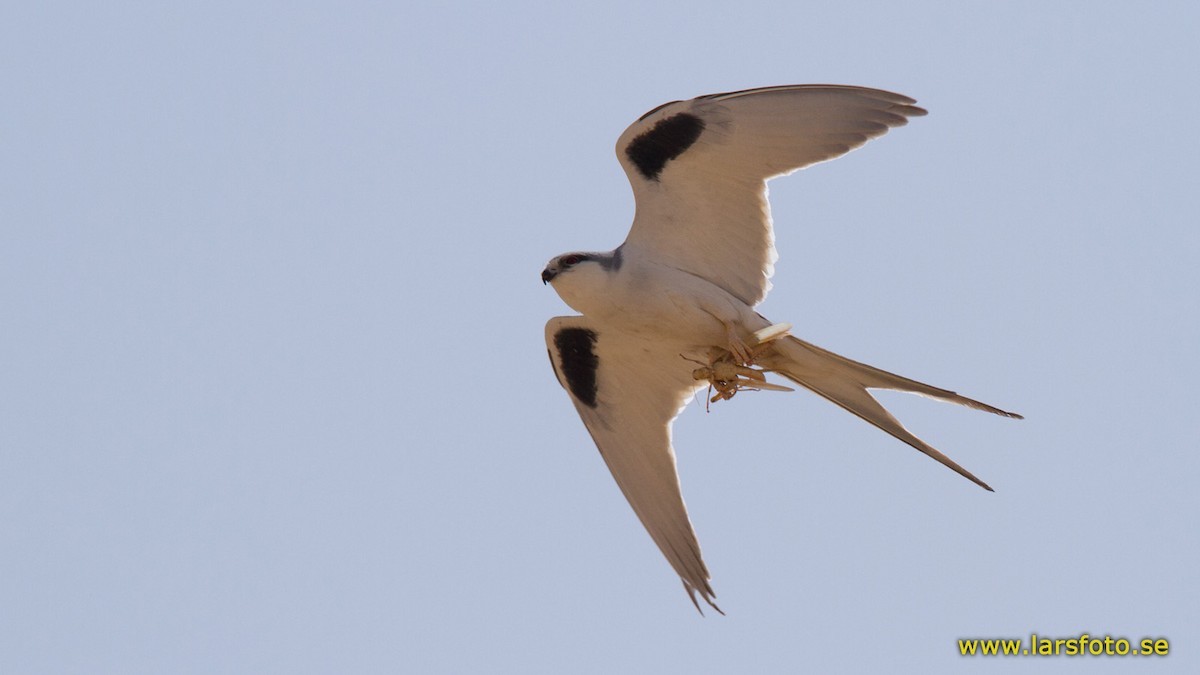Scissor-tailed Kite
A species of Kite, Also known as Fork-tailed Kite Scientific name : Chelictinia riocourii Genus : Kite
Scissor-tailed Kite, A species of Kite
Also known as:
Fork-tailed Kite
Botanical name: Chelictinia riocourii
Genus: Kite
Content
Description General Info
 Photo By Lars Petersson
Photo By Lars Petersson Description
The scissor-tailed kite is a small, slim grey and white kite with a relatively weak bill, a broad head, long pointed wings and a deeply forked tail. The adults are generally pale grey above and white below, with a white forehead and a black patch around the eyes. In flight the dark greyish flight feathers contrast with the inner underwing edges, there is also an obvious black bar across the carpal. Juveniles are darker on the back with rufous edges to the feathers and creamier below. It has a distinctive almost tern like flight and frequently hovers into the wind like a kestrel. The red eyes of the adult are also a distinctive feature. 
Size
38 cm
Nest Placement
Ground
Feeding Habits
Scissor-tailed Kite primarily consumes insects, such as locusts, termites, and ants, along with arachnids. During breeding season, the diet shifts towards more lizards and rodents. Scissor-tailed Kite forages on the wing, hawking prey or picking it from the ground, and is known to hunt in loose flocks, often over cattle or at grass fires to capture fleeing insects.
Habitat
The scissor-tailed Kite frequents arid sub-Saharan habitats, predominantly residing in steppe and scrub savanna landscapes. These birds have an affinity for Acacia scrub environments during their breeding season, while they opt for grassier territories when they are not breeding. They are known to build nests and roost in floodplain forests, which are particularly significant within Western Africa. It is common for them to roost colonially at night, often alongside other raptor species.
Dite type
Carnivorous
General Info
Feeding Habits
Bird food type
Behavior
When breeding the scissor-tailed kite feeds mainly on skinks and other lizards, as well as small snakes, rodents and arthropods. Usually hunts on the wing, dropping onto prey but does catch prey in flight, especially insects flushed by grass fires. When termites emerge or locust swarms there may be gatherings of scissor-tailed kites. Loose flocks have been known to associate with cattle, flying over the beasts and hawking any insects they flush. They breed in loose colonies of up to 20 pairs, although will do so as single pairs, mainly on May to August but breeds in December to February in the west and March- June or August in Kenya. A small stick nest is built an acacia or thorny bush at 2-8m from the ground. The nest is often sited close to the nest of a large raptor such as a secretary bird or a brown snake eagle, occasionally close to buildings. 
Distribution Area
The species inhabits the arid savannah of the Sahel region of Africa, occurring mainly in a band between 8° and 15° N that stretches from Senegal on the west coast to Sudan in the east. There are also populations breeding in Ethiopia and Kenya." It is found in many countries, including: Benin, Burkina Faso, Cameroon, Central African Republic, Chad, Ivory Coast, Djibouti, Eritrea, Ethiopia, Gambia, Ghana, Kenya, Liberia, Mali, Mauritania, Niger, Nigeria, Senegal, Somalia, Sudan, Togo, Uganda, and is also found in Yemen. 
Species Status
The species is vulnerable to degradation of the habitat and pesticides. However, populations seem to be locally common in spite of decline in some parts of the range. 

 Photo By Lars Petersson
Photo By Lars Petersson